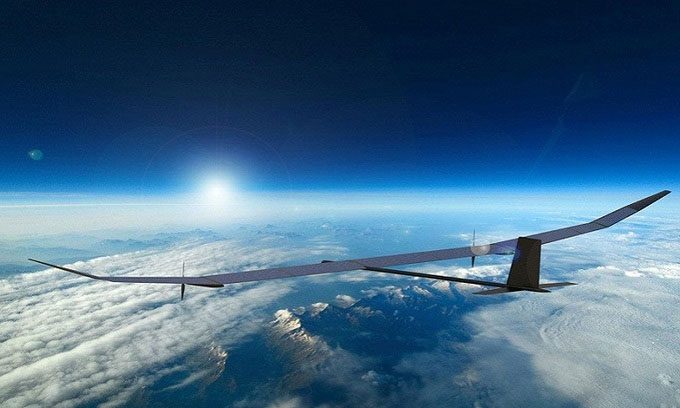The 35-meter wingspan drone can stay in the atmosphere for over a year, promising to replace low Earth orbit drones.
PHASA-35 is a drone model developed by BAE Systems at its facility in Warton, Lancashire, capable of flying at an altitude of 21,336 meters for 20 months. The vehicle harnesses solar energy to stay airborne, charging a small battery during the day to enable nighttime flight, allowing for extended operation.
The 150 kg drone can carry payloads of up to 15 kg, including cameras, sensors, and communication devices, facilitating communication among soldiers or providing internet access in remote areas during disasters or emergencies.

Simulation of the PHASA-35 drone flying in the stratosphere. (Photo: BAE).
BAE Systems has stated that their drone model will be available on the market by the middle of this decade, providing an affordable alternative to satellite technology. Developed in the UK as part of a collaboration with a team of engineers from SME Prismatic, the drone completed its first flight last year in Australia. The engineering team is preparing for the next flight in the stratosphere, marking a significant milestone that brings the PHASA-35 closer to market readiness.
The drone can only take off under suitable wind and atmospheric conditions, but since it can remain airborne for over a year, multiple drones can fly simultaneously and be ready for deployment when needed. The vehicle’s flying speed is not very fast, at about 0.3 meters/second, but it can operate in the stratosphere, unaffected by rain, wind, or commercial aircraft, thus providing stable observation over an area for extended periods.
PHASA-35 can monitor forest areas to detect and control fires by carrying sensors to fire-prone areas for months, tracking moisture levels in vegetation and predicting fire outbreaks weeks in advance. If the payload is reduced, the drone can fly higher and function as an internet broadcasting cluster over a wide area.
The research team expects to take about four years to complete testing before commercializing the product. They hope that battery technology and solar energy advancements will continue to improve over time, enabling the drone to stay airborne even longer.




















































